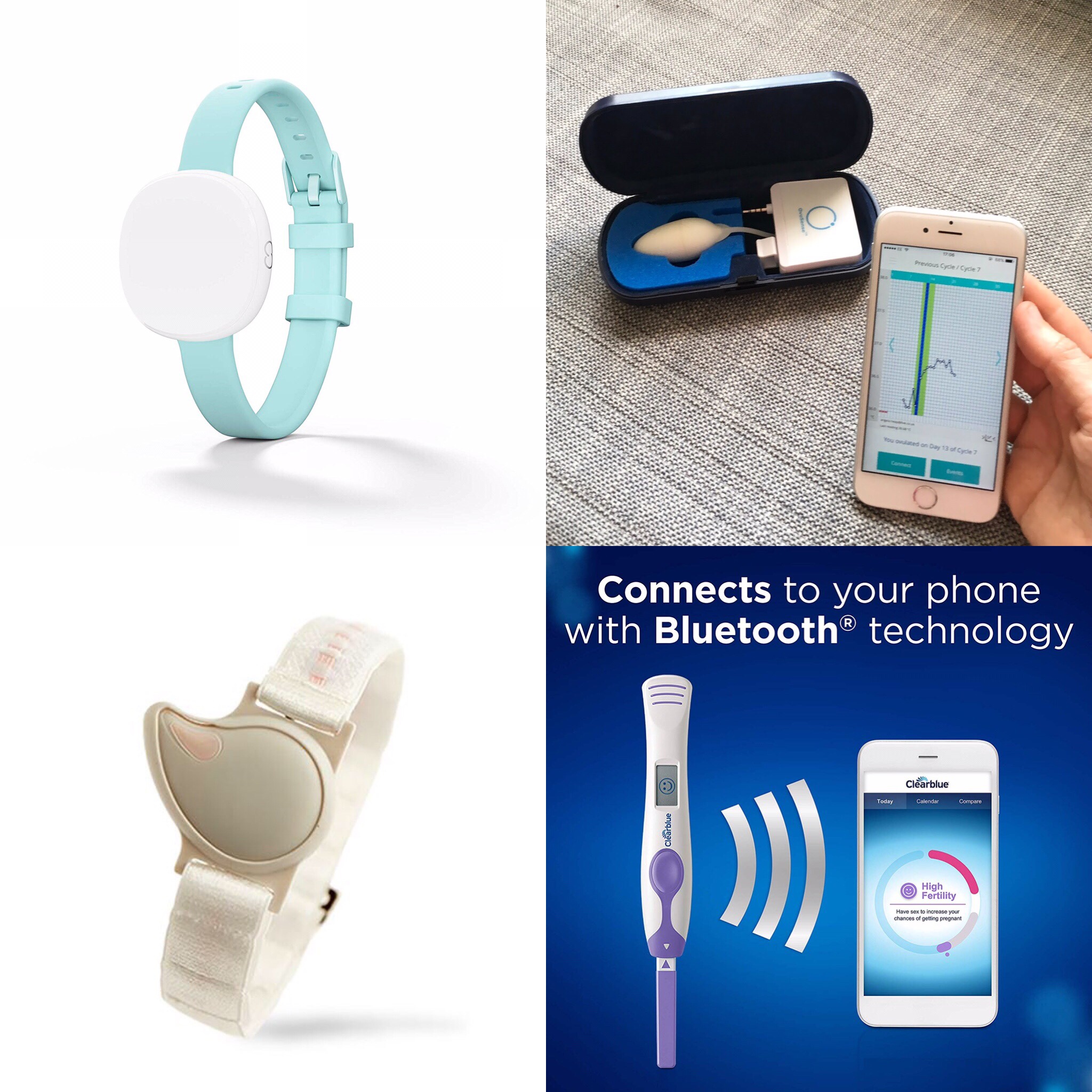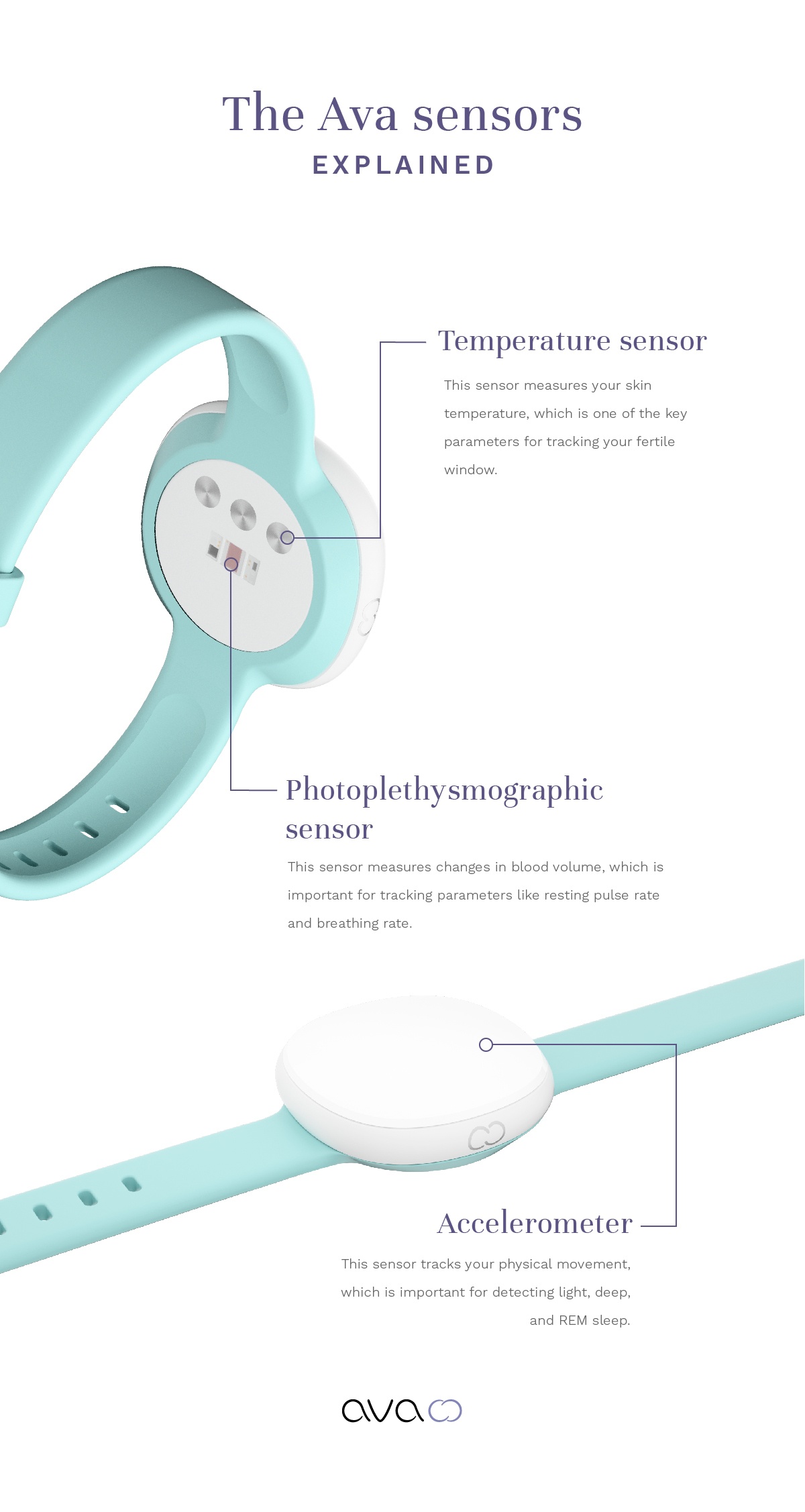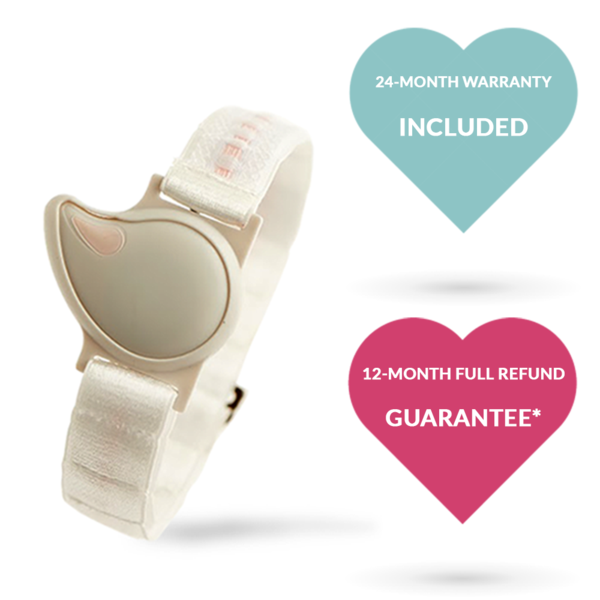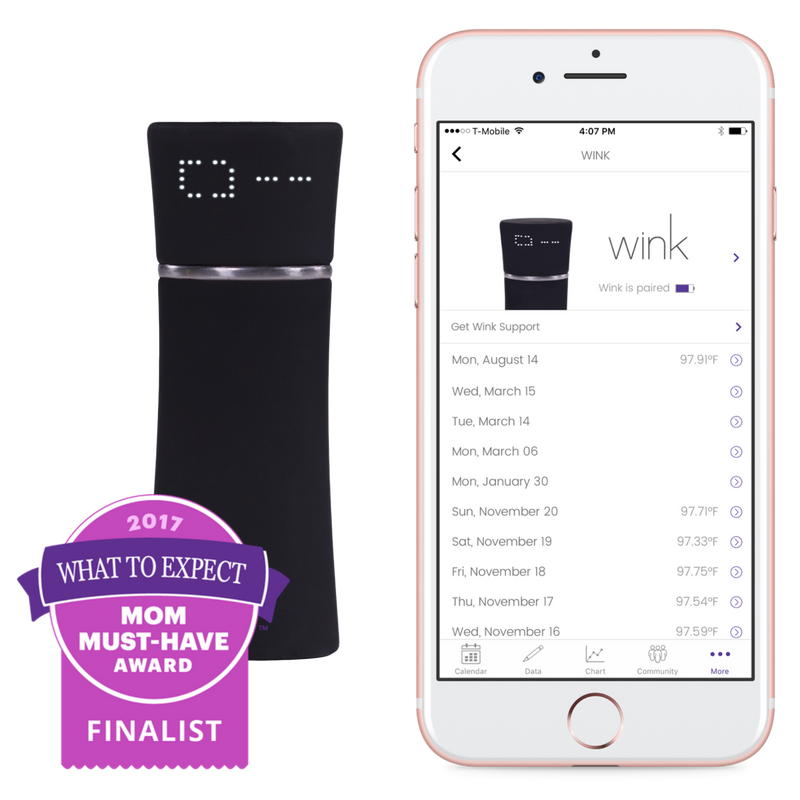
Once upon a time people just had loads of sex and if they couldn’t have children, they had a few tests and then had to get on with it. Once upon a time women didn’t have pregnancy tests, they had to just wait and see if they missed enough periods – they didn’t even get scans. Once upon a time it wasn’t today.
Because today is amazing and there are so many awesome clever things to help you get that baby. So why not use them. Here are a few.
Remember, you don’t need to spend £££ on this tech – a £3.99 BBT thermometer and the Fertility friends free app will do. But if you have the money or you want to crack on fast, these are all for you! It’s big business so please, before you buy do some research and decide what is right for you. Remember, everyone is trying to make money here but many companies are genuinely keen to make things easier for us to get pregnant faster and find out about our bodies at the same time.
I’ve looked at Ava, Ovusense, Kindara, Tempdrop and the Clearblue connected Bluetooth system here. Please be aware I have tried a few of these but not all.
Ava Bracelet – £249
I’m a little biased towards Ava as I used it TTC my daughter and was an early adopter to the technology, but to be fair it’s a really super piece of technology. It has had a rather aggressive marketing campaign and it isn’t quite there for women with longer cycles or PCOS (See Ovusense if you have either of these or Tempdrop) but the science is pretty sound, the app is reliable and they have just bought out version 2 which has had a lot of the original issues with the original version ironed out into a new smooth line design. It is ‘clinically proven’ (which all these devices claim to be) as well, so it has been a part of genuine studies however unlike Ovusense these are all commissioned by Ava.

In a nut shell, you put the charged bracelet on to sleep overnight, sleep, wake up, synch it to the app using bluetooth then put it on to charge again. It will tell you when is the best time to get busy and give you 4-6 days when you are most fertile. The rest is up to you. It works over 9 different parameters to predict this and argues that it gives you the biggest window for the highest chances of conception although.
Advantages to it are it is external, it’s easy to use and it’s quick to charge and you can use it to track your pregnancy if you so wish (personally I didn’t). Their customer service is very helpful and the people who work for it really believe in it. It also has a great community on Facebook (Ava Moms has got me through many a sleepless night). The app is easy to use and it’s simple to read.

Disadvantages are it is heavily reliant on WIFI to upload results, you can only access results through the app on your phone (although you can request a report to be emailed to your account which makes up for that and can be taken to the Drs etc.) and it’s quite a delicate bit of tech so beware any toddlers or big, stompy partners accidentally spilling water on it/putting it in their mouths. I loaned my Ava 1.2 to a friend and she got through two of them as bits fell off. They have ironed these issues out in Ava 2.1 but if you have an older model it’s understandably frustrating especially when you want to get cracking. The postage is also quite slow as they ship from Europe, their advertising as I said above is quite aggressive (and also misleading – if I see another made up model wearing it while juicing in the morning on my Insta feed, I shall scream). They have also concentrated on the USA and other parts of the world, so have a lot more scope for business in the UK I feel.
But a great piece of tech for women with cycles under 36 days.
You can buy Ava here
Ovusense – £99 (2 months subscription), £199 (a year subscription)
Ovusense is another big TTC tech item which has also started aggressively spamming my Instagram feed. They are so confident their technology will work they offer a 100% money back guarantee. It works on the premise of a small tadpole like sensor which you insert internally. Their customer service were awesome when I asked for more info and although I haven’t had the opportunity to try it myself, I have asked for some reviews to share on the blog.

You get your charged sensor, insert it up your vagina (yes it goes up there) before bed and then take it out in the morning and link it using WIFI to your app. It claims to be able to read your core body temperature to predict ovulation within 24 hours and confirm this afterward. Apparently they can predict an impressive 8 day fertile window. Which is pretty cool.

Advantages are that the science behind this device is sound and they seem to be confident enough in it that they will refund you if it doesn’t work (although like all things there are caveats to this). It’s discreet and from a bit of digging online would appear to work for women with PCOS very well. In fact, in general the feedback seems to be very positive on it if you have very wonky periods. I would say if you are ok with a 24 hour window or have PCOS this is the device for you.
Disadvantages are fairly clear. When TTC you’ve usually spent a long time with things being poked up your foof (sorry husband) so poking another thing up there would seem to be not a great choice for those tired of this. I was also a little concerned about hygiene and the long term effects of shoving plastic (sorry, medical grade silicone which made me feel much better) up there too, but they seem to unworried by this. I was reassured by the lovely Caroline from customer services that it is a grade II medical device and is very, very hygienic.
I would argue that if the technology works the app should come free. However I understand there is a lot of support which comes with the device and they are concerned that they will lose money with people reselling devices (won’t lie – I’m not 100% sure I would want to buy this second hand). Caroline did say ‘The OvuSense App is free, the subscription payment is for access to the sophisticated patented algorithm. OvuSense is the most accurate fertility monitor on the market and the only one which tracks core body temperature every 5 minutes and then confirms ovulation with 99% accuracy. As it is a Class II fertility monitor, users are strictly prohibited from selling the device onward.’ This has not stopped people selling it on EBay though.
Sending women desperate to conceive ‘baby dust’ on their adverts also makes me want to hurl. However, I am actually pretty impressed by this device so far. Definitely worth investing in! Can’t wait to one day try it.
You can buy it here.
Tempdrop – not 100% sure you can get it in the UK yet but around £150
Tempdrop claims to track your BBT and poinpoint ovulation this way. It is worn in the form of an armlet (bracelet around your upper arm?) overnight and then you synch it using bluetooth with an app on your phone.

Kind of loving the design in a weirdly 80’s way. One reviewer described it as looking like her ‘grandmother’s wedding garter’ which made me chortle. A lot.
It claims that ‘Tempdrop uses two temperature sensors and an acceleration sensor that measures three-axis acceleration (x, y, and z) to acquire information on ambient and body temperature. It can also be used to avoid pregnancy using the symptothermal method which Natalie from customer service assured me is 99.4% affective with perfect use (or 98% with with less perfect use – not bad).
Tempdrop combines two algorithms, a learning algorithm and a patent-pending Active Temperature-Noise Cancellation (oooo) filtering algorithm to both learn personal sleeping temperature patterns and filter out disturbances to temperature readings like blankets or sleeping positions’. Natalie did point out ‘the other main indicators are cervical mucus and cervical position. I only mention this because I think it’s an important note when it comes to marketing various “parameters”‘ – which is fine but I would argue that cervical position is heavily subjective and not reliable for a lot of people. Mine is up and down like my toddler dancing to the Wiggles with no sense behind it.
Reviews are lukewarm and I would argue that it has all the disadvantages of the Ava without actually offering any of the other parameters, not to mention wearing one on the upper arm sounds more uncomfortable than around the wrist and sounds like it would slip off more easily. Also once again we find a subscription service for the app safe guarding against resale which (as you know) I think is a little cheeky.
I also kind of feel these guarantees are a bit worthless – 95% of couples will conceive within 12 months of starting to try and usually couples will have been TTC for longer BEFORE they buy these things, so they are offering something which most likely would happen regardless of their tech.
Anyway.
Most complaints are that the armband is uncomfortable or that it broke easily. I’m going to go out on a limb here and say buy the Ava Bracelet if you want an external bracelet for the money as the technology is better (although Natalie did counter this by pointing out that Ava have mostly conducted their own studies and that the writs is not a great place to take your BBT so……).
Kindara – with optional Wink Device (or you can use any BBT thermometer)
Kindara is a very simple app which you take your temperature with every morning and enter in your BBT reading. It’s in here because they sell the Wink which is a BBT thermometer you can connect via bluetooth to the app. They used BBT and cervical fluid as the two parameters for predicting and tracking ovulation.
Now I like Kindara as they have a good community and they also want to encourage women to understand their bodies. You can use it to get pregnant, avoid pregnancy or just find out about how your body works.

Positives are that it is free/cheap to use and it is fairly affective for most women who have regular cycles for all of the uses they say you can use it for.
Negatives would be that it’s still quite clunky to use and if you track BBT you do need to be getting a good 4 hours of shut eye at a time and possibly not working nights. But a fantastic low budget option.
Clearblue Ovulation Test System – £40.00ish
Clearblue Connected Ovulation Test System is apparently clinically proven to double your chances of getting pregnant in the first cycle of use according to Clearblue’s studies. It claims to track two key fertility hormones. You connect the device to your phone via bluetooth. Results are synced and displayed on your phone and you can also set reminders on when to pee.
You use the usual ovulation pee sticks (usually in the middle of the day after a hold – I usually got my best results using urine at that time of day) and then shove them into the little machine which will then read the two hormones in your wee and tell you on your screen and phone if you’re ovulating.

I used the Clearblue ovulation system with the smiley faces alongside Ava the month I conceived my daughter and it was bang on. I am unsure of why you now need something that syncs to an app but it feels like the most logical step as it will keep a note of your cycles. It will also send you ‘smart’ reminders based on your cycles for when you need to start and stop testing.
Advantages are it’s a cheap (ish) way to work out when you’re ovulating and has good science behind it and decent success rates. It’s also easy to order and Clearblue customer service is pretty good in the main.
Disadvantages are it’s messy and it will not suit anyone with PCOS or whose cycles are irregular. I would honestly say, if you are one of those people invest in Ovusense, Tempdrop or Ava. It is also dependent on having enough sticks, remembering to use them and it is also worth considering the environmental waste involved in using so much plastic.
They have been nice enough to offer me the use of one so watch this space for a blog post.
Conclusion
There is so much out there for the couple who want to use technology to conceive. It is genuinely exciting to see that companies are wanting to invest in women’s health and there is still a long way to go.
Hopefully what you have above here will help you make a few decisions. I would argue that all of the above do the job in a way. But none of us are the same. What works for one woman will not work as well for another. For example, Ava or Tempdrop would not be worth using if you have PCOS whereas Ovusense would be a good option instead.
I will be releasing some blog reviews on various devices over the next few months so please keep an eye out for them and any feedback, as always, is appreciated!

